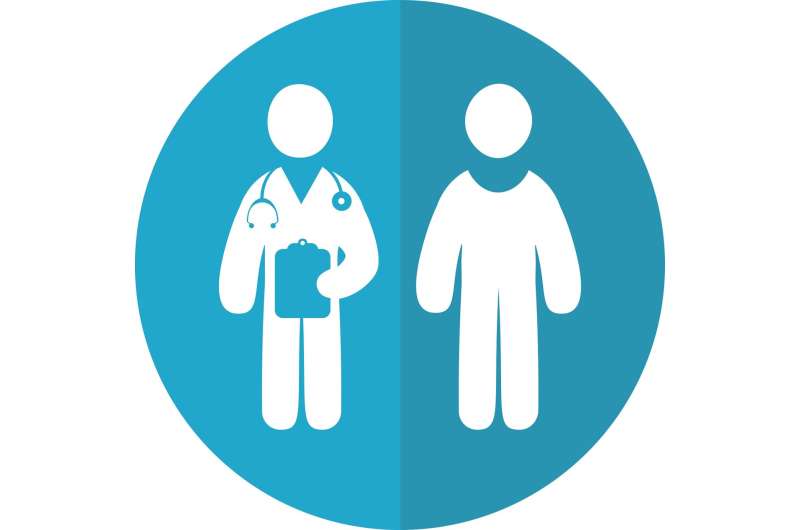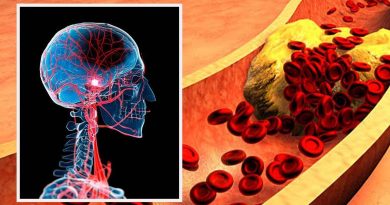Preliminary data suggest that ROS1 inhibitor, NVL-520, is well-tolerated and active in non-small cell lung cancer

Preliminary data from a phase I clinical trial of a new drug called NVL-520 for patients with non-small cell lung cancer (NSCLC) and other solid tumors, suggest that it may have the potential to both halt tumor growth by inhibiting a cancer-causing gene change, and to reach cancer cells in the brain, with very few side effects.
Presenting the preliminary data from the phase I portion of the ARROS-1 phase I/II trial on Friday at the 34th EORTC-NCI-AACR Symposium on Molecular Targets and Cancer Therapeutics in Barcelona, Spain, Dr. Alexander Drilon said that while the primary goal of the phase I part of the trial was to evaluate safety and tolerability of NVL-520, early signs of activity were also seen and there were no dose-limiting toxicities (DLTs) or side effects that led to dose reductions or discontinuation of treatment.
“These preliminary data from the phase I part of the ARROS-1 study are very encouraging and I believe support further clinical investigation of NVL-520 as a potential best-in-class ROS1 inhibitor,” said Dr. Drilon, who is the Chief of the Early Drug Development Service at Memorial Sloan Kettering Cancer Center (MSK), New York, U.S..
ROS1 is a gene which can join (or fuse) with part of another gene. The fusion activates the ROS1 gene in a way that causes uncontrolled cancer cell growth. The gene change is called ROS1 fusion. These fusions occur in 1-3% of NSCLC, as well as some other cancers, such as pancreatic cancer. Tumors that are driven by ROS1 fusion can be treated with targeted therapies known as ROS1 tyrosine kinase inhibitors (TKIs).
In the ARROS-1 trial there were 21 patients with NSCLC for whom data about tumor response were available by 13 September 2022. Of these patients, 48% (10/21) achieved partial responses, in which cancer shrank by at least 30% in size, following treatment with NVL-520. Responses were seen across all dose levels tested. In addition, responses were seen in the most heavily pre-treated patients enrolled in the trial. These included 53% (9/17) of patients who had received two or more prior ROS1 TKIs and one or more prior lines of chemotherapy, and 50% (9/18) of patients previously treated with lorlatinib or repotrectinib, which are ROS1 TKIs also in development. Further, responses were seen in 78% (7/9) of patients whose tumors also had a ROS1 mutation called G2032R that enables resistance to currently available ROS1 inhibitors.
NVL-520 has now been studied in 35 patients at five increasing dose levels with no DLTs and no adverse events leading to dose reductions or discontinuation of treatment. Most treatment-related side effects were mild, with the most frequent being mild fatigue, which occurred in 11% (4/35) of patients. There was no reported treatment-related dizziness, a common neurologic side effect that has been observed with other ROS1 TKIs in development.
In many patients with ROS1-positive NSCLC, cancer cells can spread (metastasize) to the brain from the site of the primary tumor. Following treatment with NVL-520, measurable brain metastases either shrank or became undetectable in three out of three patients. In addition to these patients, some had a prior history of brain metastases or tumors in the brain that were not measurable. For these patients, the response rate was 73% (8/11). None of the 35 treated patients showed any emergence of or increase in metastases in the brain.
Dr. Drilon said, “Because therapies that enter the brain are needed to treat brain metastases, there is the added challenge of avoiding inhibition of a protein called TRK. Several ROS1 TKIs inhibit TRK because ROS1 and TRK are similar in structure. TRK inhibition can cause neurologic side-effects such as dizziness, burning or tingling, weight gain, and pain when the drug is temporarily or permanently stopped.
“NVL-520 was designed with the goal to both enter the brain well and avoid TRK inhibition. These characteristics were observed in patients treated on ARROS-1. Brain metastases responded to treatment and substantial neurologic side-effects have not been observed thus far.”
At present, there are only two TKIs approved by the US Food and Drug Administration (FDA) and by the European Medicines Agency: crizotinib and entrectinib. However, in some cases, the cancers eventually become resistant to these therapies and start to grow again. There are no approved targeted therapies available for use after this happens. Other ROS1 TKIs are being investigated but they are limited by factors such as treatment resistance, particularly when new ROS1 mutations emerge such as the G2032R mutation, inability to cross the blood brain barrier to target brain metastases, or adverse neurological side effects.
“These preliminary data show that NVL-520 had encouraging activity against ROS1 resistance mutations, including a commonly occurring resistance mutation ROS1 G2032R,” said Dr. Drilon.
The patients in the ARROS-1 phase I clinical trial all had previously treated solid tumors driven by ROS1 fusions, and all patients with NSCLC had been previously treated with one or more courses of ROS1 TKIs. The median (average) number of prior lines of anti-cancer treatment was three, ranging from one to 11 courses of therapy. Of the 35 patients treated with NVL-520, all of them had received other ROS1 TKIs; 77% had received three or more prior lines of anti-cancer therapy, 80% had received two or more ROS1 TKI therapies, and 80% had received other ROS1 TKIs in development. At enrolment in the trial, 51% of patients had a history of brain metastases.
The primary objective of the phase I portion of the trial was to establish the recommended phase II dose for the phase II part of the trial. Data from patients up to 13 September 2022 were analyzed for presentation at the EORTC-NCI-AACR Symposium. Thirty-five patients, 34 with NSCLC and one with pancreatic cancer, received NVL-520 orally at dose levels ranging from 25 to 125 mg once daily. A maximum tolerated dose has not been reached, and the recommended phase II dose has not yet been selected.
The phase I part of the trial is continuing to enroll previously treated patients with advanced NSCLC or other solid tumors that have a ROS1 fusion. Once a recommended dose has been identified for the phase II part of the trial in discussion with the FDA, more patients will be enrolled, including patients who have not received any previous treatment, to evaluate efficacy and safety of the drug.
Advanced NSCLC is difficult to treat successfully, and the proportion of patients who are still alive five years after diagnosis is less than 8% approximately.
Source: Read Full Article



